“WOW!” I could probably end this review right here with that one word, and to me, it would be sufficient to describe how I feel about this rod. But you probably want to hear a little more than that! So, spoiler aside, here are the reasons why I fell in love with the Oni Style Coco 290 the first time I fished it (and why the love affair continues).
Field Test Notes
I fished the Oni Style 290 on four different freestone streams ranging from 3 ft. to 30 ft. wide along Colorado’s Front Range. This gave me a good idea of how it handles in a range of situations; everything from tight, vegetation choked brooks to wide-open meadow streams where a longer, stouter rod would have been a better choice. In short, I wanted to push its limits. For line, I used 12 feet of #3 or #3.5 level fluorocarbon and 3′ to 5′ of 5X tippet according to the situation. Flies were a mix of lightly weighted sakasa kebari and dry flies, sizes #20-#12. Note: I did not fish the rod with furled lines.
Manufacturer Specs
Length: 2.9m (9.51″)
Closed Length: 60cm (23.622″)
Weight: 30g (1.06 oz.)
Number of Segments: 6
Action: 7:3
Recommended Tippet: 7X – 3.5X
3 Reasons I Love the Oni Style 290
(and you will too)
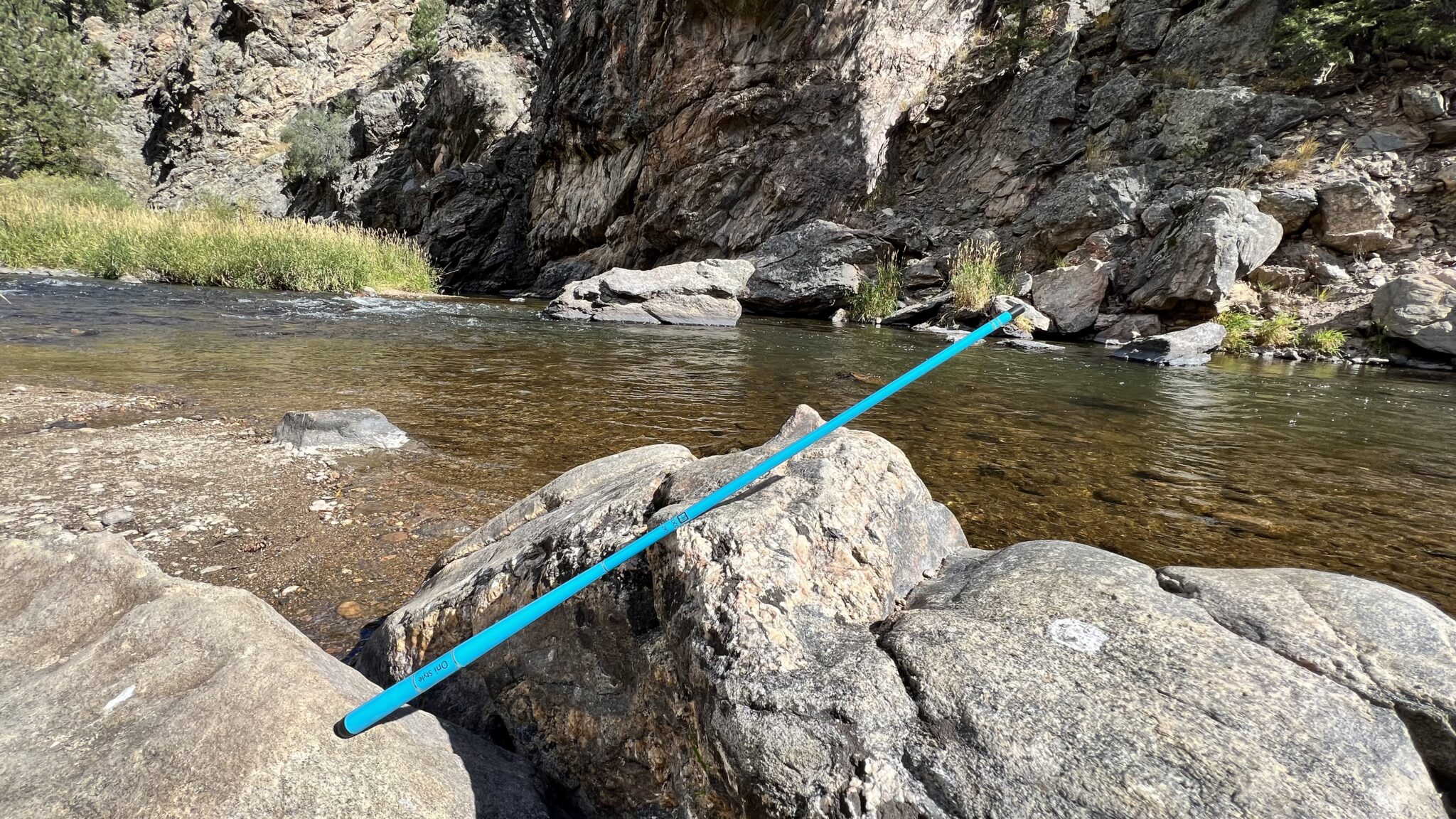
“If I were in a casting competition for accuracy,
I’d want this rod in my hand”
When I first saw the Oni Style Coco 290 billed as a “beginner” rod (and the Barbie & Ken colors), I almost dismissed it as somehow not in the same league as the flagship Type I or Itoshiro (two of my favorite rods). But let me assure you, this is an Oni rod through and through and if you had the same initial reaction I did, read on. Here are just a few reasons to love this rod, all of which will sound familiar to Oni rod owners (and too good to be true to first-time buyers).
1. Gravity-defying Swing Weight
Oni rods are known for their exceptional balance and light feel–which is difficult to achieve as length increases. It’s easier (design-wise) to make a shorter rod feel not only physically lighter but also have a low swing weight. So you can imagine if you take a well-balanced 13′ rod such as the Type I and shrink it down to less than 10 feet, that you’ll end up with a rod that you forget you’re holding. And that’s exactly what it feels like to cast the Oni Style 290. You almost forget you’re holding it and there’s a sensation that it’s just you and the line. In tenkara, we often talk about the “connection” we find by removing distractions, and if any rod embodies that principle, it’s this one.
2. Classic Oni Action
As I said above, this is a true Oni rod–an action that fits my casting style perfectly. I usually have to figure out new rods–to discover their personality. But since the Oni action was already in my DNA, I was able to pick it up and cast it as if it had been in my arsenal for years. All the hallmarks of an Oni rod were there: the crisp flex, fast tip recovery, effortless casting. It was all familiar, so the courtship was short and sweet.
3. Accuracy
“Accuracy” is a pretty loaded marketing term and there’s debate on how much the rod even matters (vs. the angler’s skill alone). I’m sure it’s both (to some extent), but I can tell you empirically and emphatically that my accuracy is definitely better with the Oni Style. It literally puts the fly exactly where I aim with my index finger–like crosshairs in a rifle scope. I had the same feeling when I got my Itoshiro, so there’s another genetic trait passed down from its descendants. I’ll be the first to admit I’m not the best caster, so it must be the rod to some degree. All I know is that if I were in a casting competition for accuracy, I’d want this rod in my hand! Since this is a small-stream rod, accuracy is obviously important in tight quarters where you need to avoid snags and present your fly in a very narrow window. And the Oni Style 290 does all of that exceptionally well.
Hardware & Aesthetics
This rod looks unlike any other rod from Tenkara no Oni. Rather than their typical grey graphite blanks, these are painted and available in either blue or pink. I’m not sure why they chose these colors (possibly to appeal to children since they do refer to it as a beginner rod), but I chose the blue thinking that it would blend in with the sky and be much stealthier than the pink. Some people might not like these color choices, but if you can look past it; once you cast it, the action might convince you to be colorblind!
Like other Oni rods, graphics are spartan with the Oni logo, some simple lettering, and gold accents.
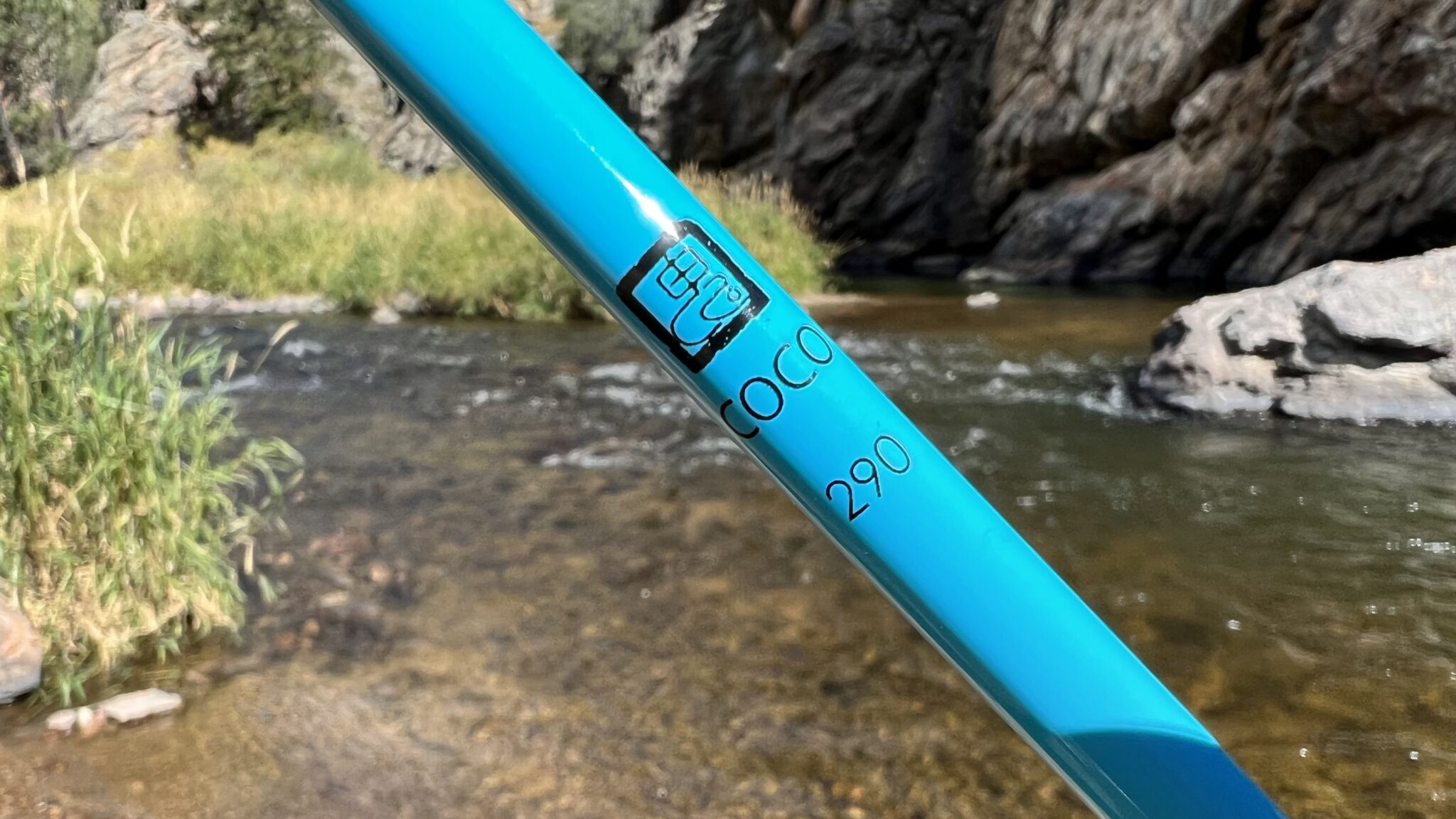
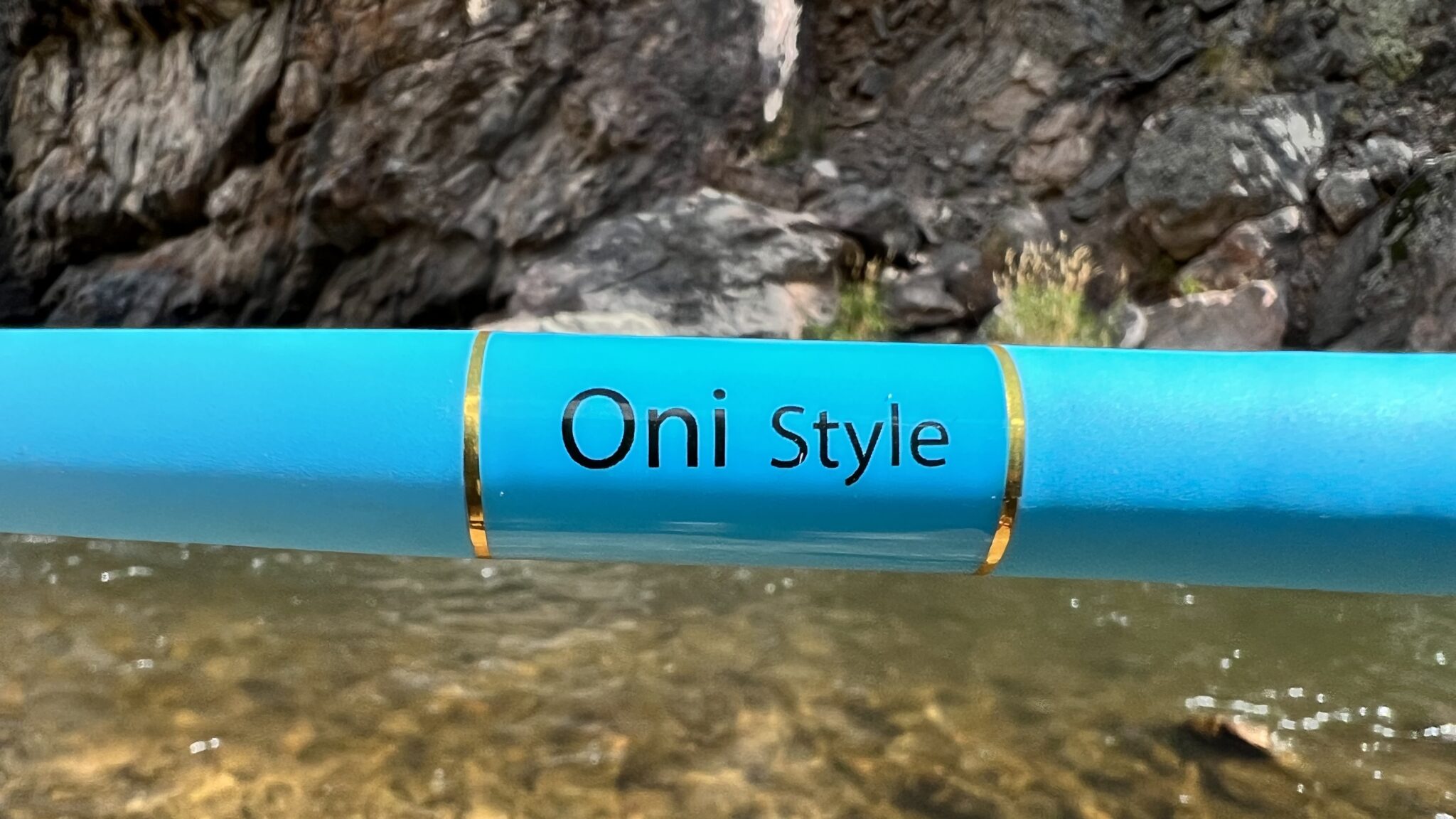
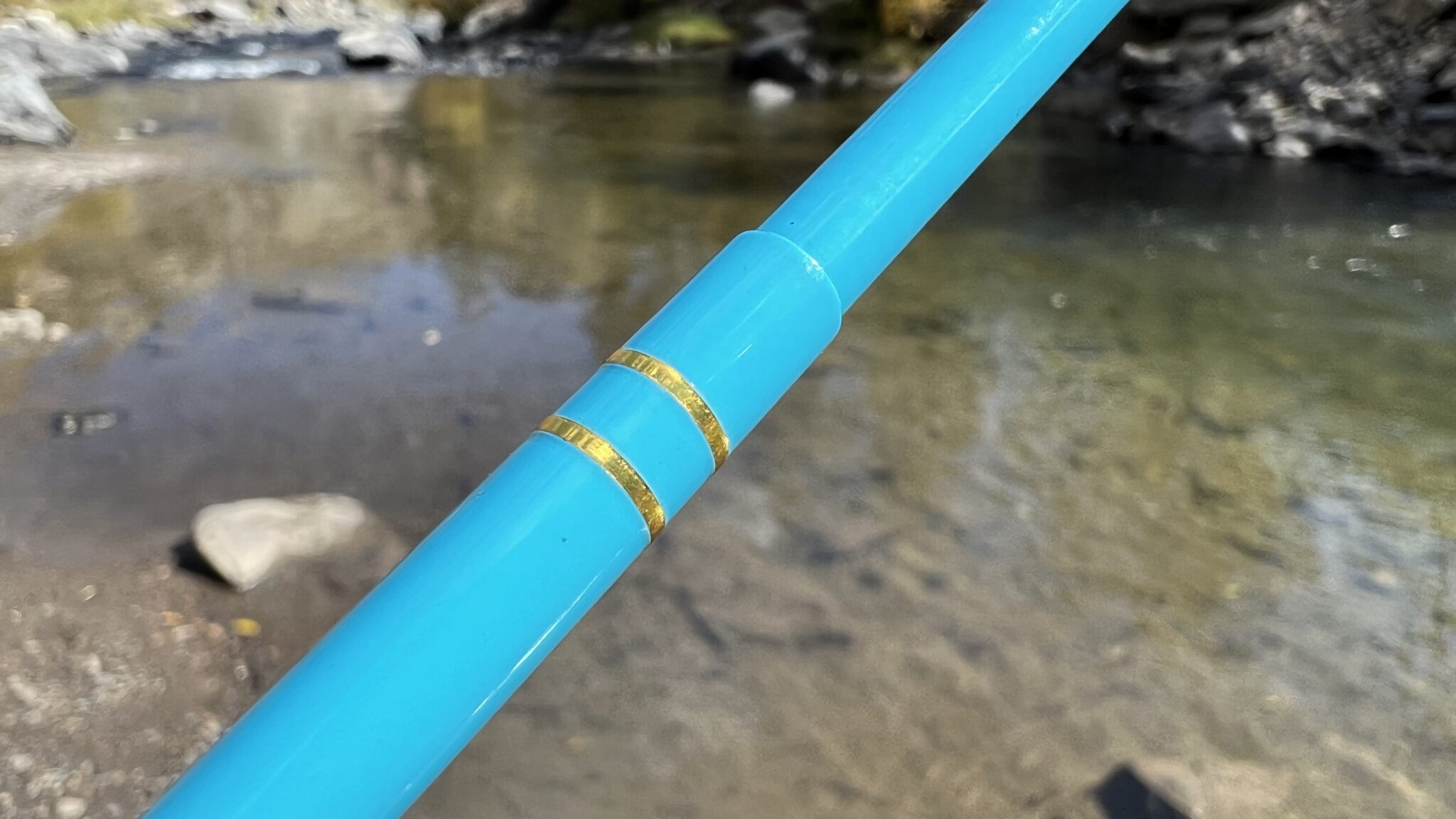
The lilian is standard-issue, with no swivel tip. The tip segment is slightly thicker than the Type I in order to prevent help breakage (a beginner-focused feature).
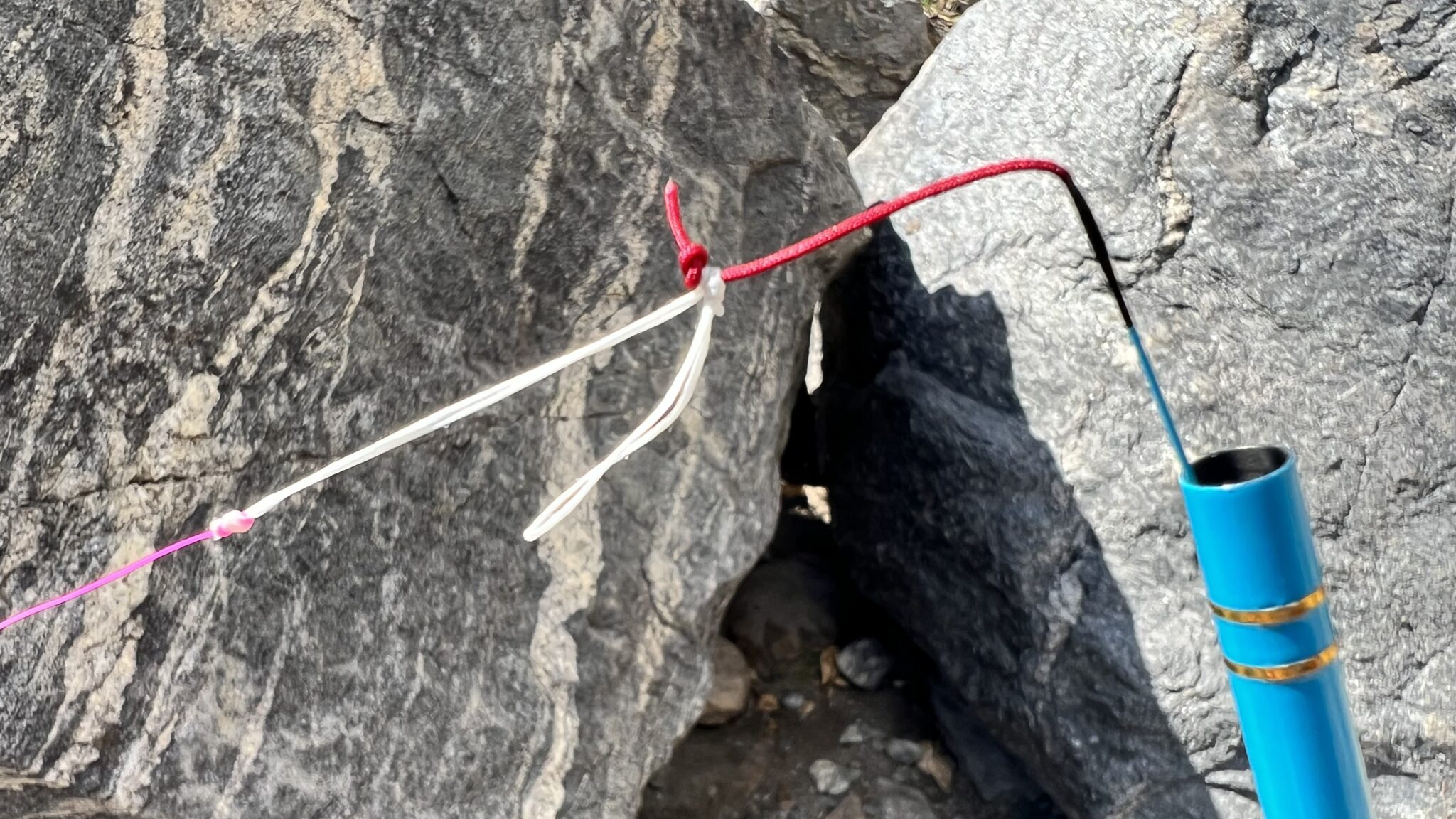
While other Oni rods sport brass end caps, this one is nylon and features a cushion to prevent clacking during transport. It makes sense they’d use plastic (rather than their typical brass) on this model in order to keep the weight down to just over one ounce.
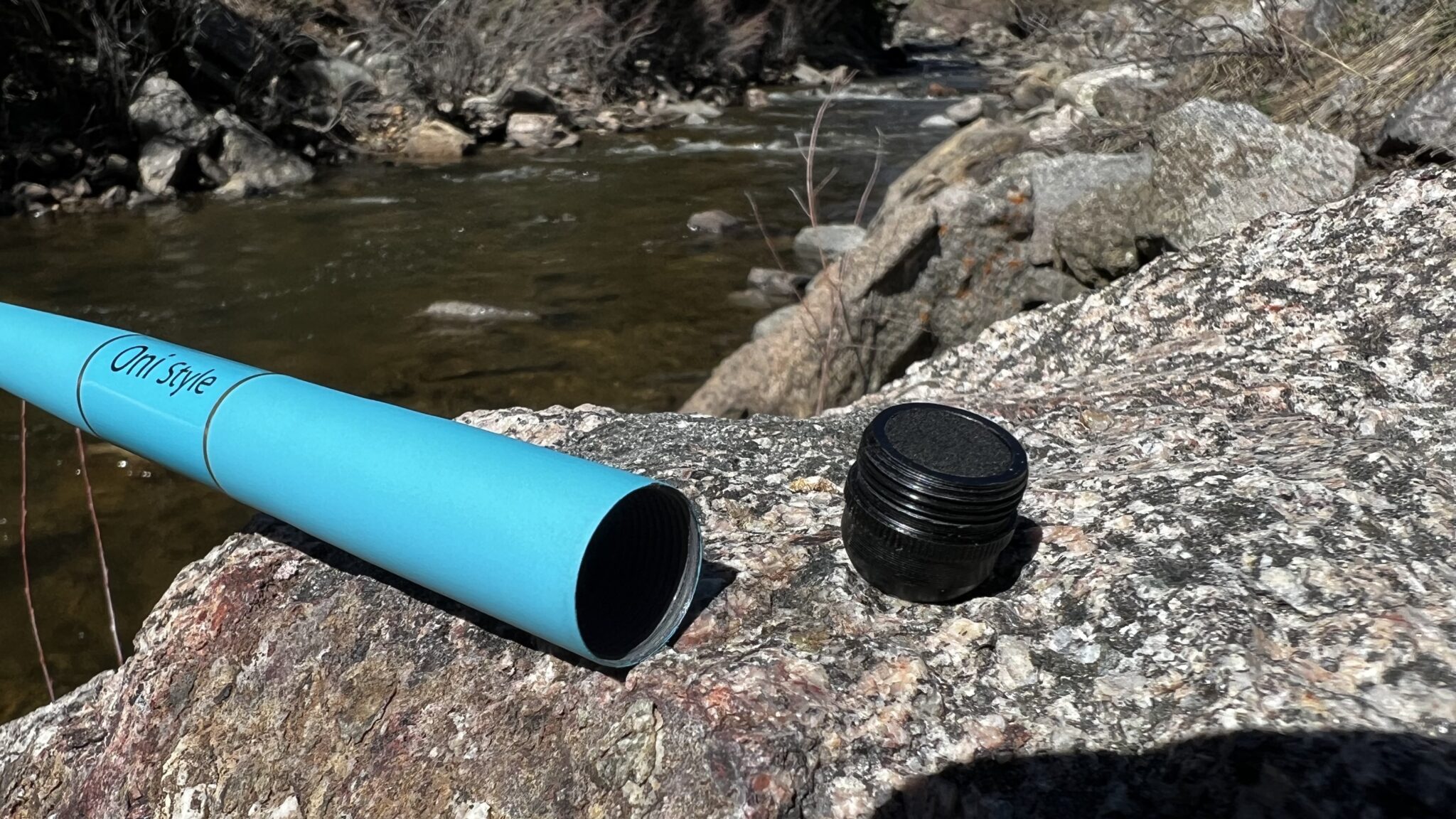
Overall, the Oni Style 290 has a solid, quality feel and is nicely appointed. Like most Japanese rods, no rod tube is included.
The Grip
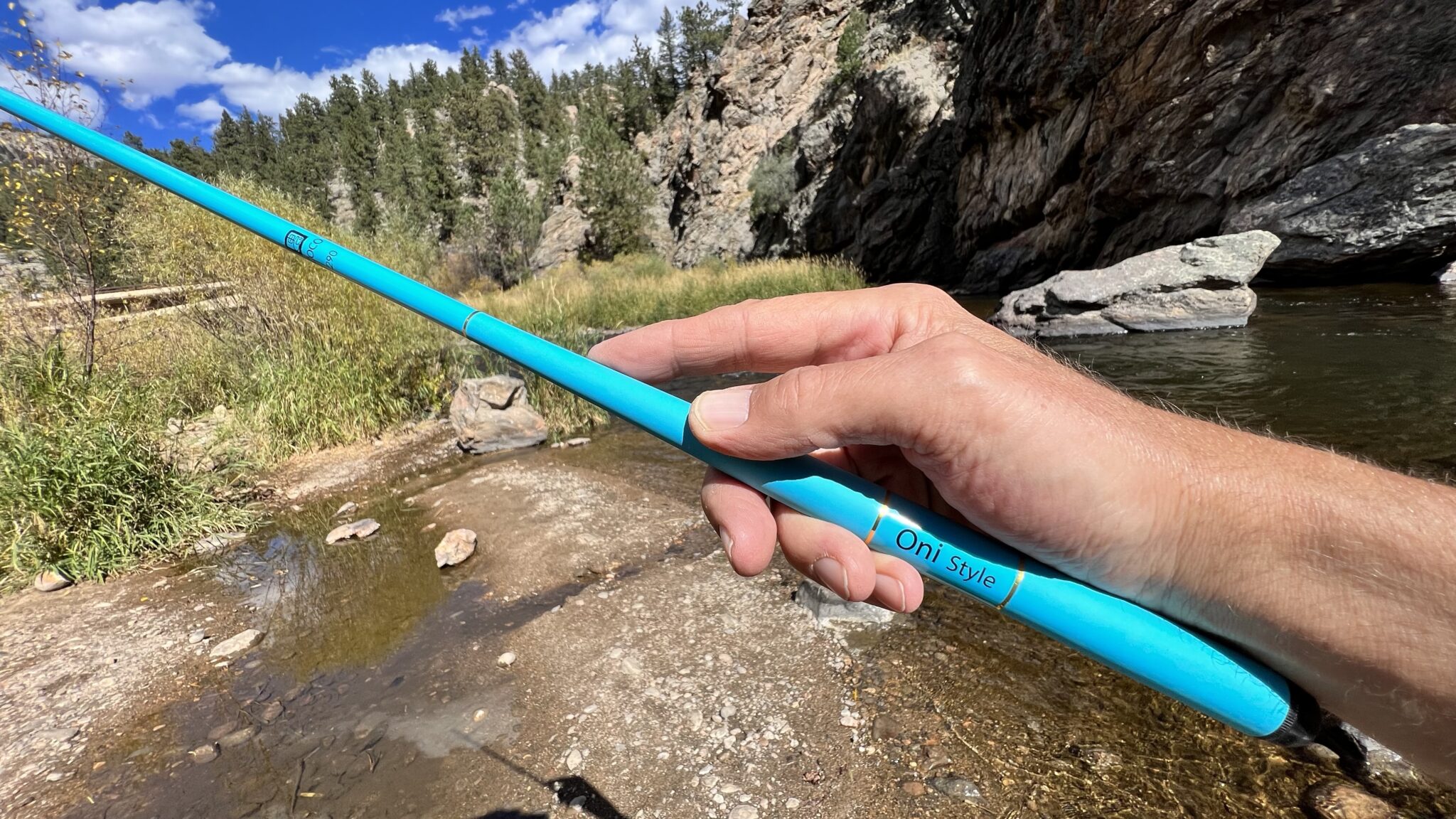
Another departure is the lack of handle and there’s been much discussion about this. Until now, all Oni rods came with a foam, cork, or bamboo grip. The “grip” on this rod is just a flared extension of the blank which is nothing new, yet is somewhat divisive. Proponents of “gripless” rods say it allows better sensitivity for strike detection. Others say they’re too thin and cause cramped hands. I’ve even seen DIY grips added to this rod to increase the diameter (which I’ve thought about myself).
While I would prefer a cork or foam grip, I’ve become accustomed to it the way it is. At this point, I think it might actually feel strange to add a thicker grip. Whichever camp you’re in, I’d urge you to not let the lack of a handle be a dealbreaker, because you’ll be missing out on the action (literally). Once you cast it, I believe the action might trump any reluctance you have about carbon grips. I was preoccupied with it at first and now I don’t even think about it. All I think about is how I can’t wait to get out there and cast it!
YGMV (your grip may vary), but I find it most comfortable
to hold the rod at the butt with the end cap in my palm.
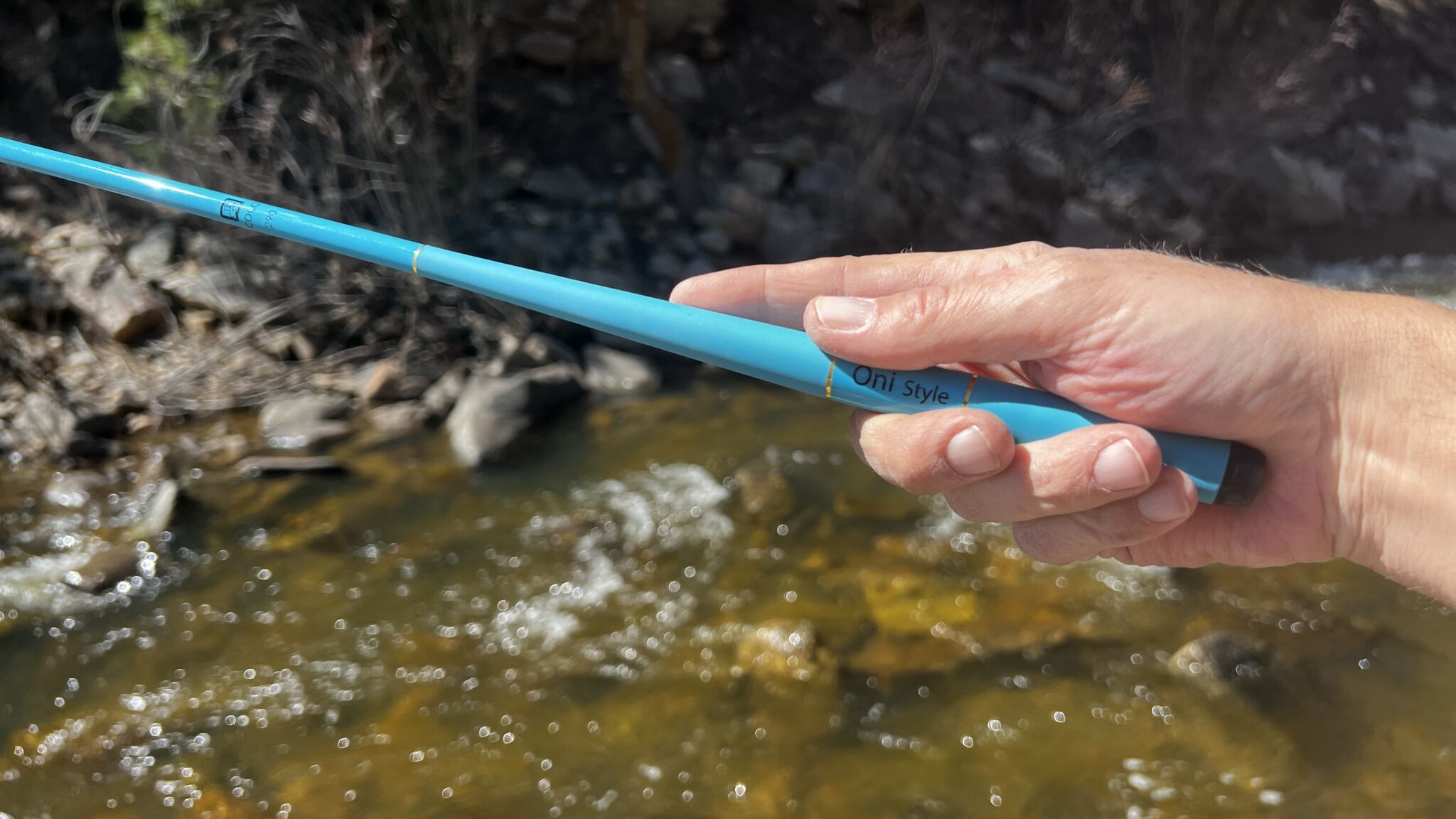
Applications
What’s the right job for this tool?
I should point out that this is not a pocket rod. Despite its 9 1/2 ft. open length, the closed length is more typical of a standard length tenkara rod. This is because in order to reduce overall weight and preserve the action borrowed from the Type I, they had to employ fewer segments. You might know that more segments = more weight (and also changes the flex), so this makes sense. They set out to make a high-performance short rod, not an ultra-compact one, so the collapsed size isn’t a design focus here.
That being said, I consider this an extraordinary all-around small-stream rod. As mentioned, I fished it in all sorts of situations and it really shined in all (even the ones outside of its comfort zone). It’s extremely easy to cast, so I’d say it would be good for beginners, but to call it a “beginner rod” would be unjustly pigeonholing it. The action is suitable for beginner or expert alike, and I think there are traits of this rod to be appreciated at all levels.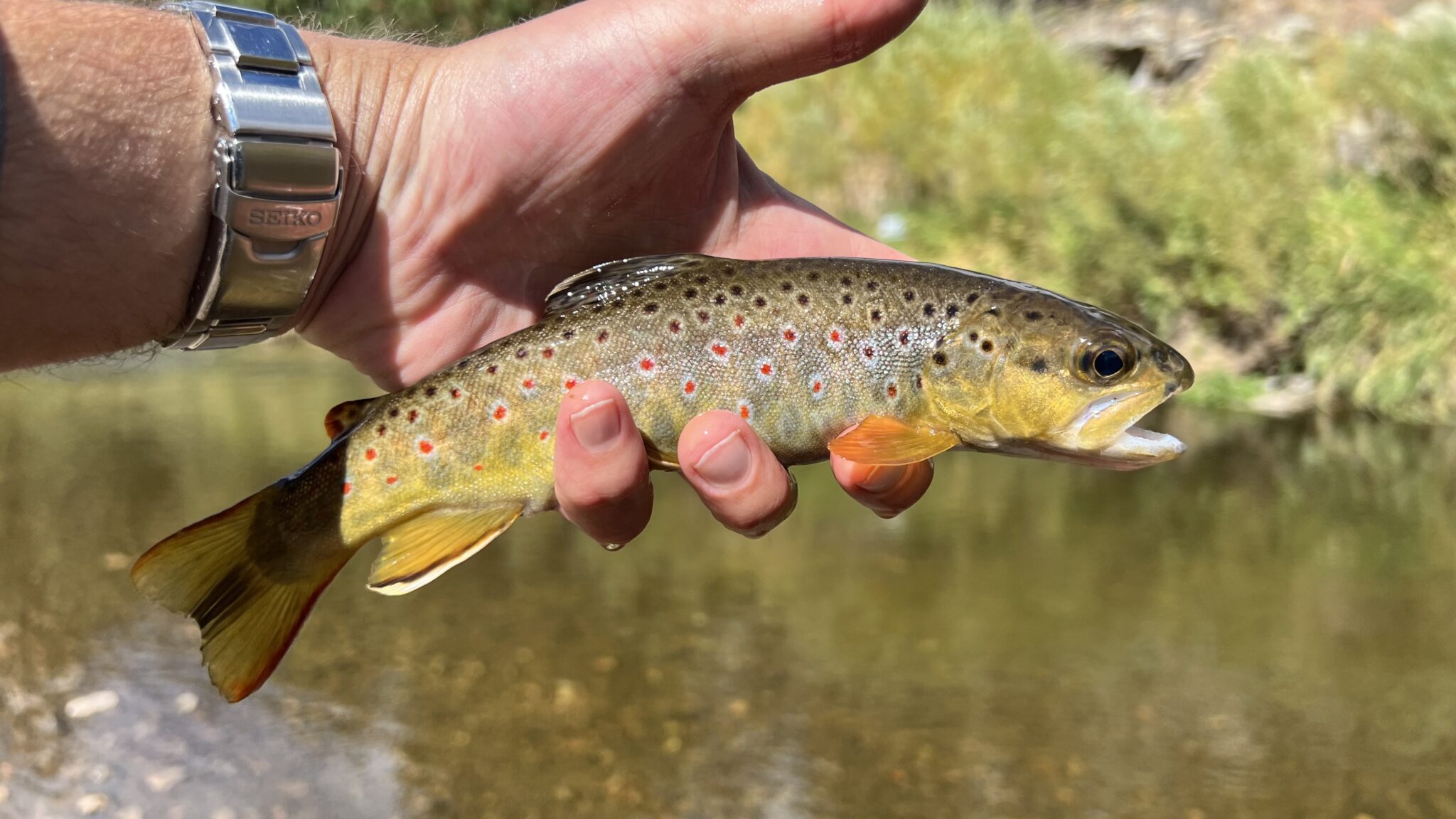
The Oni Style rod excels in the situations for which it was intended: small streams, small trout, tight quarters. It’s a good length for getting under cover and accurate enough to drop your fly in tiny pockets and micro pools. It will turn over unweighted or lightly weighted kebari well, but it’s also a great dry fly rod! Basically, you could say this is the right rod for pretty much any small-stream situation.
And regardless of your experience, one thing that’s undeniable is that playing even an 8″ trout on this rod is pure fun! The largest fish I caught on it was 14″ (which is “big” for that watershed) and I had no problem landing it in a really tight pool with lots of snags and overhanging limbs. It’s a deceptively strong rod and can probably handle fish bigger than it was intended for (and certainly anything I’ll encounter in my local blue lines where 8″-10″ is the norm.
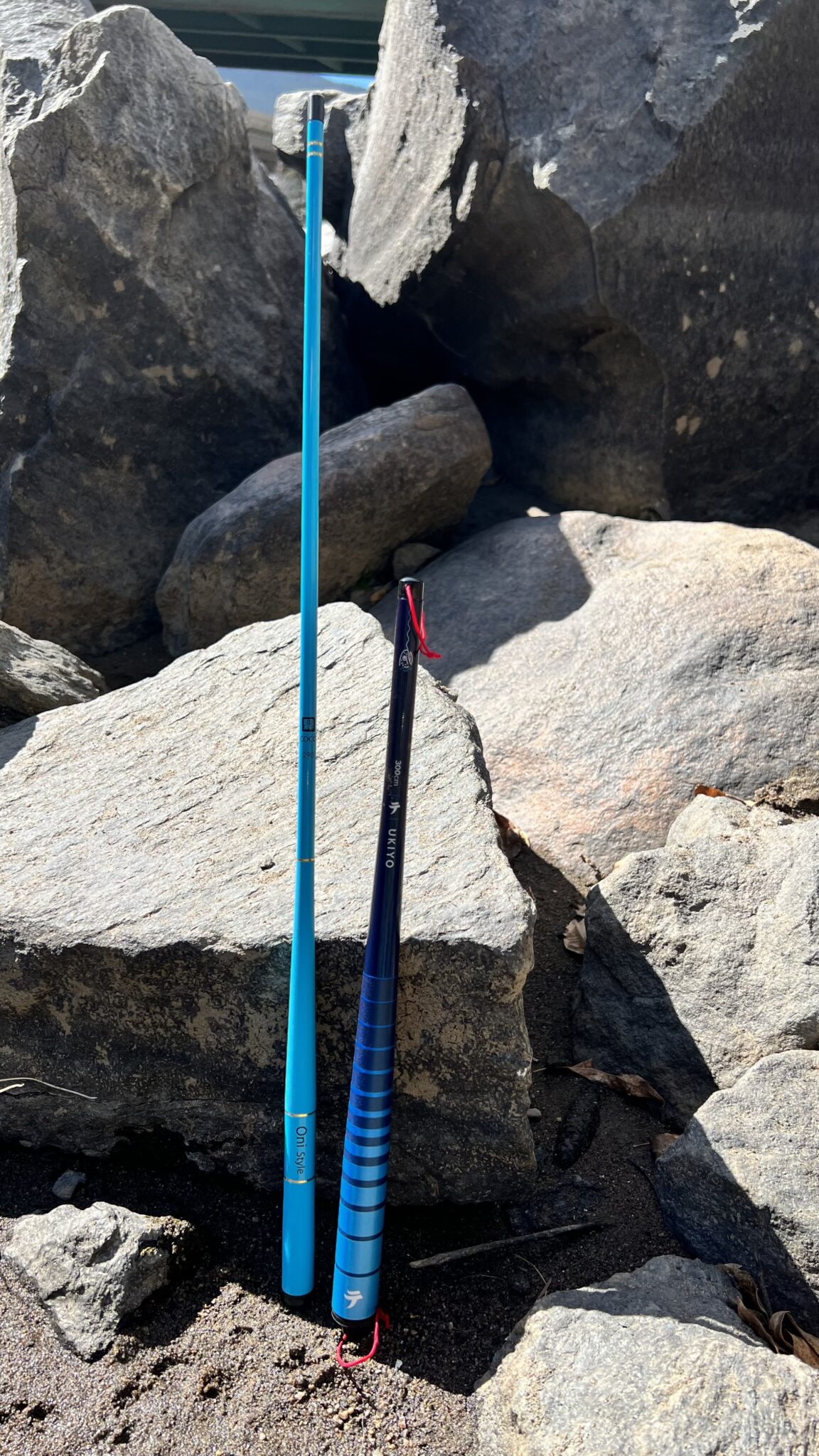
Oni Style Coco 290 & Tenkara USA Ukiyo 300
An Oni rod from tip to butt

This may be a short version of the Type I, but it’s not a “dumbed-down” version. In his review, Tom Davis wrote that it’s “one of the best small stream rods ever produced”, and I wouldn’t consider that hyperbole. If you’re looking for a high-performance rod that will handle the specific challenges of small streams, I think you’d be hard pressed to find a more capable tool. And if you’re in the Oni camp, then you already know exactly why.
Where to Get One
There is nowhere in the U.S. to purchase Oni products, so you’ll need to order directly from their website. If you’ve never ordered form Japan before, you might be thinking the shipping will be expensive and it will take forever to arrive–and, you’d be half right. It is expensive ($30), but considering it’s a long, awkwardly shaped package coming from halfway around the world, that’s not so unreasonable.
But it won’t take forever! In fact, you’ll be surprised just how fast it arrives. I order from Japan on a regular basis and can tell you from much experience, the Japan Post is faster, mroe efficient, and more reliable than the USPS! If you have any problems or questions, feel free to reach out to me!


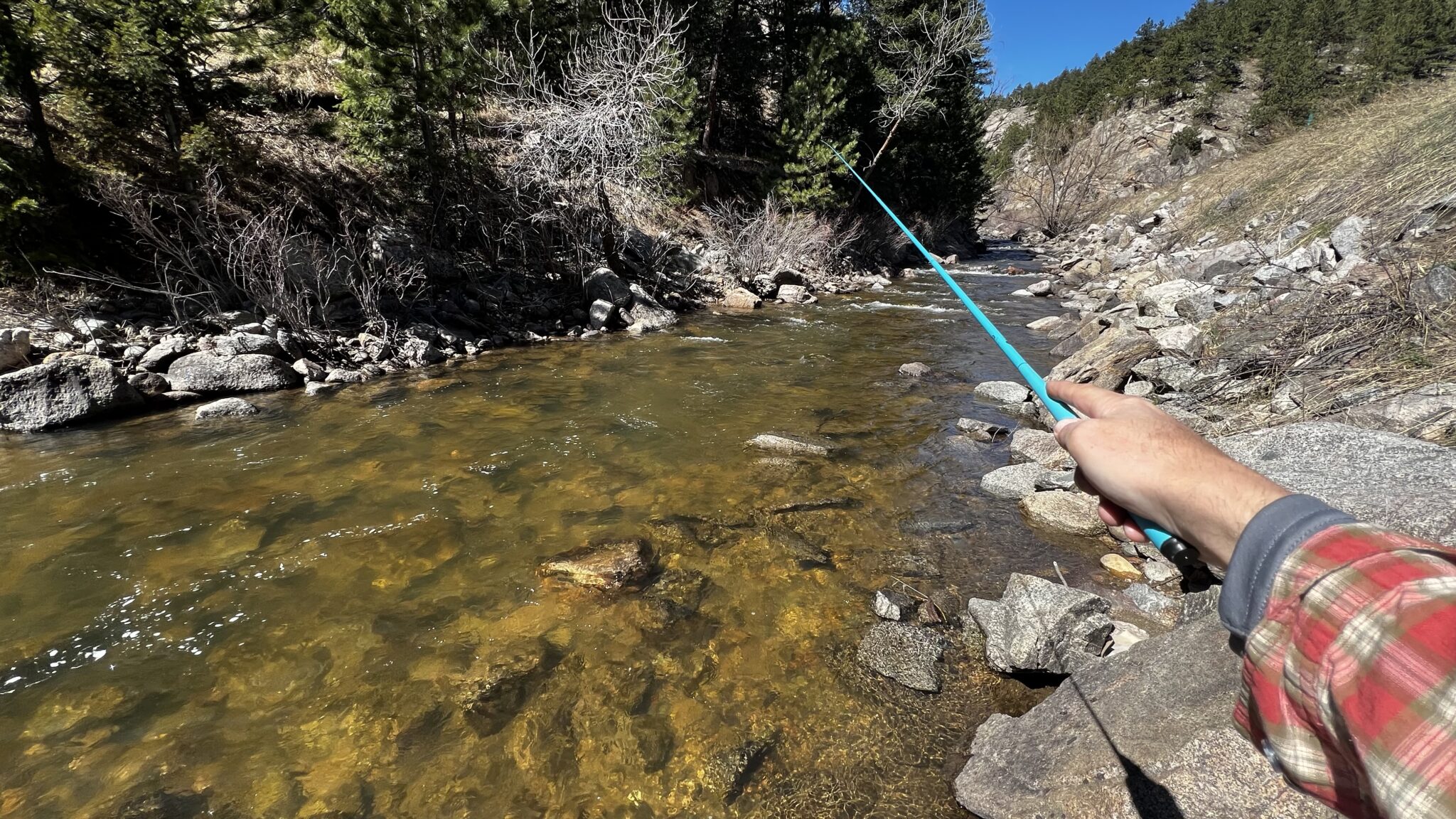
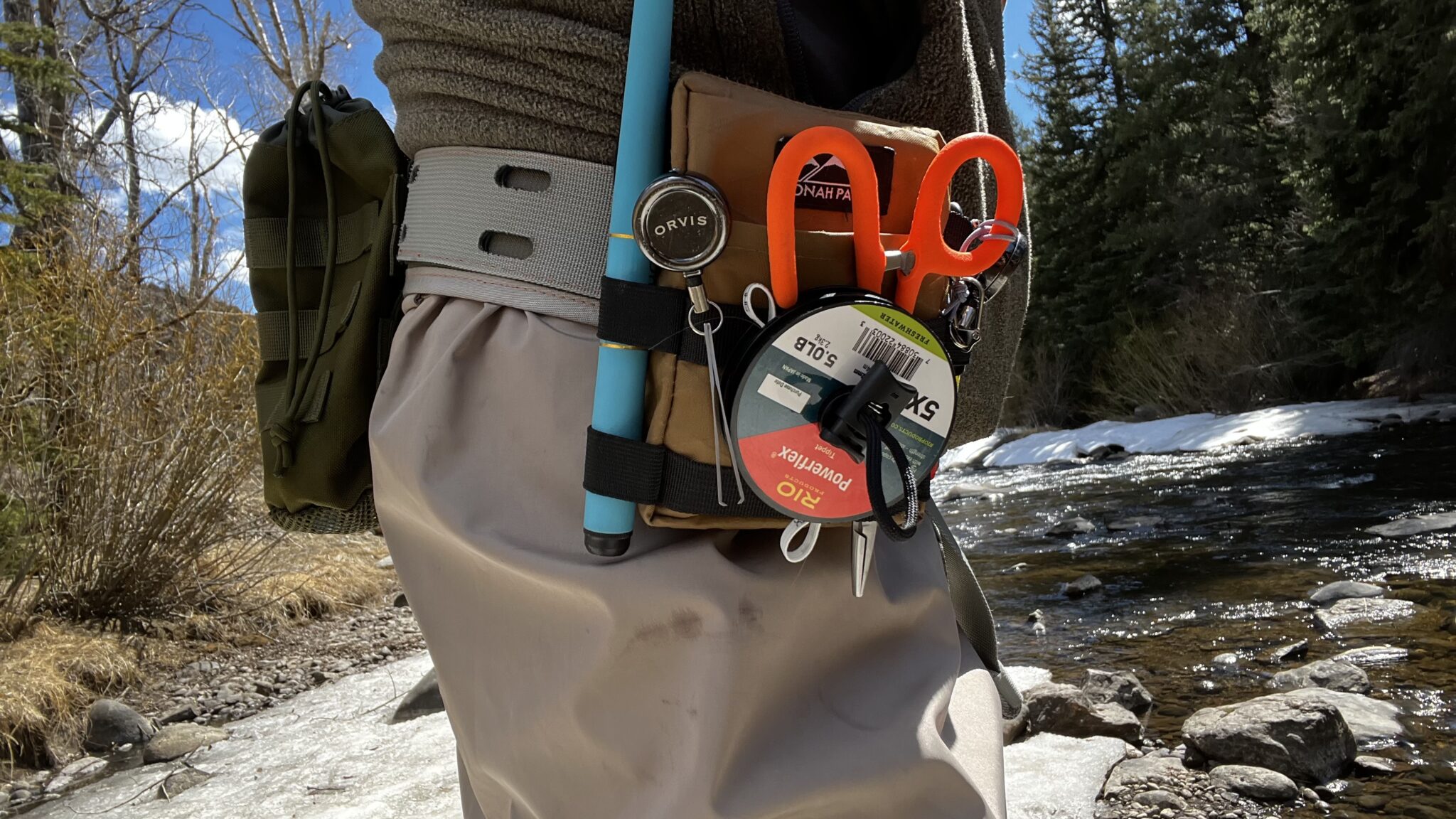






And the yen-to-dollar exchange rate is very favorable right now. No better time to take the Oni plunge.
Good point, Gary!
Love it! Spot on review.
I am convinced this will be my first JDM rod after talking to Keegan and this review helped confirm that. Thank you Jason.
Great choice, Payton! I’m sure you’ll love it!